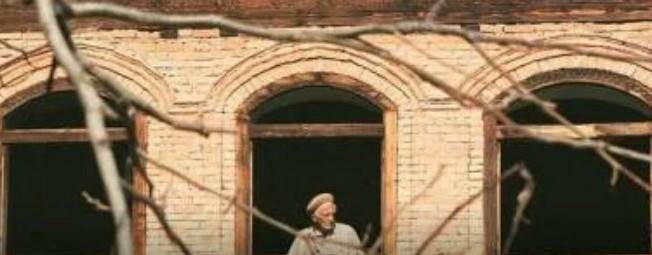
25-Oct-2021
Killing Hindus in Kashmir.
In January 2013, when this image was taken, resigned government representative Omkarnath Bhat, then, at that point, 75 years of age, was the main Kashmiri Pandit staying in Haal town of Shopian in South Kashmir. Haal was once home to more than 100 Kashmiri Pandit families, the unfilled shells of whose homes remained in the town when The journalist visited Bhat.
It is a long time since the 'mass migration' from the Valley of its minority Hindu Kashmiri Pandit people group. The fervently challenged conditions of their flight among January and Walk 1990, the numbers, and the issue of their return are a significant side to the Kashmir story that has taken care of into the Hindu-Muslim polarization in India throughout the long term, thus fuelling the Hindu-Muslim gorge in the Valley. The departure occurred while the BJP was raising the stakes across northern India, and throughout the long term, the predicament of Kashmiri Pandits has turned into a powerful Hindutva issue.
The run-up: 1980s to 1990
In the number one spot up to the occasions of 1990, Kashmir was in mature. Sheik Abdullah had kicked the bucket in 1982, and the initiative of the Public Meeting gave to his child Farooq Abdullah, who won the 1983 political decision. However, inside two years, the Middle split up the NC, and introduced dissenter Ghulam Mohammed Shah as Boss Clergyman. This prompted immense alienation and political unsteadiness. The Jammu and Kashmir Freedom Front (JKLF) moved forward its exercises, and the hanging of the assailant chief Maqbool Bhat in 1984 added to the feeling of premonition. In 1986, after the Rajiv Gandhi government opened the Babri Masjid locks to empower Hindus to offer petitions there, swells were felt in Kashmir as well.
In Anantnag, the supporters of then Congress pioneer Mufti Mohammad Sayeed, there was a progression of assaults on Hindu sanctuaries, and shops and properties of Kashmiri Pandits, accused on nonconformist and secessionists. In 1986, as resistance to the Shah government developed, Rajiv Gandhi revived Farooq Abdullah, who became CM indeed. The manipulated appointment of 1987 after which Abdullah framed the public authority was a defining moment at which assailants took the high ground. The 1989 capitulation to the JKLF in the hijacking of Mufti Sayeed's little girl set up for the following decade.
By then, at that point, the Pandits had started to be focused on. The Valley's BJP chief Tika Lal Taploo was shot dead on September 13. Neel Kanth Ganjoo, a resigned judge who had condemned Maqbool Bhat to death, was shot dead external the J&K High Court in Srinagar on November 4. Writer legal counselor Prem Nath Bhat was shot dead in Anantnag on December 27. Hit arrangements of Pandits were available for use. Influxes of frenzy hit the local area, particularly after a neighborhood paper distributed an unknown message, supposedly from the Hizb-ul Mujahideen, requesting that Pandits leave.
Outside Omkarnath Bhat's home in Haal town, Shopian.
The evening of January 19, 1990
Matters reached a critical stage on January 19. By then, at that point, the Farooq Abdullah government had been excused and Lead representative's Standard forced. As per accounts distributed by numerous prominent Kashmiri Pandits, there were undermining trademarks over amplifiers from mosques, and in the city. Addresses were made lauding Pakistan and the incomparability of Islam, and against Hinduism.
The Kashmiri Pandit people group chose to leave. On January 20, the main stream started leaving the Valley with hurriedly pressed assets in whatever transport they could discover. A second, bigger wave left in Spring and April, after more Pandits were killed.
On January 21, the CRPF gunned down 160 Kashmiri Muslim dissidents at the Gawkadal Scaffold, which has come to be known as the most noticeably awful slaughter in the long history of the contention in Kashmir. The two occasions — the trip of the Pandits and the Gawkadal slaughter — occurred inside 48 hours, yet for quite a long time, neither one of the networks could acknowledge the aggravation of the other, and here and there, still can't, as each keeps on talking past the other.
As per a few appraisals, remarkably by the Kashmiri Pandit Sangharsh Samiti (KPSS), of 75,343 Kashmiri Pandit families in January 1990, a larger number of than 70,000 escaped somewhere in the range of 1990 and 1992. The flight proceeded until 2000. The KPSS has set the quantity of Kashmiri Pandits killed by aggressors from 1990 to 2011 at 399, the larger part during 1989-90. About 800 families have stayed in the Valley through these thirty years.
Job of the organization
The other argumentative inquiry concerning the departure is the pretended by the organization, and all the more explicitly that of the J&K Lead representative, Jagmohan.
Recently selected, he had shown up in Srinagar on January 19. The Kashmiri Muslim perspective on the mass migration is that he urged the Pandits to leave the Valley and accordingly gave a public tone to what exactly was up to that point a non-strict Kashmiri reason. The Kashmiri Hindu view is that this is a pretentious understanding. They accept that Kashmiri Muslims, with whom they had lived agreeably for quite a long time, drove them out furiously in a furor of Islamism that they couldn't have envisioned even months sooner. Reality, numerous observers have finished up, may have been some place in the center.
Wajahat Habibullah, then, at that point, a senior authority in the J&K government and posted in Anantnag in 1990 as Uncommon Magistrate, has composed (Resident, April 2015) that in Walk 1990, a few hundred individuals assembled before his office requesting to know whey the Pandits were leaving and blamed the organization for empowering them to go, 'so the Military would be allowed to release its substantial mounted guns on all residences'. Habibullah denied this and let them know that the Pandits could scarcely be anticipated to remain when each mosque was booming dangers and individuals from their local area had been killed. He requested that Kashmiri Muslims cause Pandits to have a sense of safety.
Habibullah composed he additionally spoke to Jagmohan 'that he broadcast an enticement for Pandits that they stay in Kashmir, guaranteeing their wellbeing based on the affirmation of the Anantnag occupants. Shockingly, no such allure came, just a declaration that to guarantee the security of Pandits, 'exile' camps were being set up in each locale of the Valley, and Pandits who felt undermined could move to these camps instead of leave the Valley. Those Pandits in help who felt undermined were allowed to leave their stations; they would keep on being paid compensation… '
Other analysis has highlighted how the public authority coordinated vehicle for escaping Pandits so they could get to Jammu.
An octogenarian in Kaloosa space of Bandipora area. Her family is one of only a handful of exceptional Kashmir Pandit families in Bandipora. (Shuaib Masoodi/Express Document)
The topic of return
The escaping Pandits didn't figure they could always avoid the Valley. Yet, as the circumstance in Kashmir spiraled into an all out aggressiveness, return started to look remote if certainly feasible. As the numbers showing up in Jammu expanded from thousands to many thousands over the initial not many long stretches of 1990, a generally working class local area ended up living in tents in disgusting, unsanitary camps far eliminated from the homes they had abandoned. The people who had implies remade their lives somewhere else in the nation — Delhi, Pune, Mumbai and Ahmedabad have Pandit populaces, likewise Jaipur and Lucknow — or traveled to another country. A municipality of two-room apartments called Jagti was implicit Jammu somewhat recently to house 4,000-5,000 Pandit families who stayed there. Likewise, there are many families living in government apartments in Purkhoo on the edges of Jammu, in Nagrota and in Muthi. Some assembled new homes and additionally moved into leased spots.
The yearning to get back to the Valley didn't decrease throughout the long term, however it might have become more a thought than a genuine aspiration. Progressive state run administrations have guaranteed that they will help this cycle, however the circumstance on the ground in Kashmir has implied this remaining parts just a goal. The endeavors to resettle Pandits in the Valley over the most recent twenty years have seen ghetto-like designs come up in different pieces of Kashmir, ringed by concertina wire with weighty security, underlining that ordinary life is unimaginable. There is an intense acknowledgment locally that the Valley is presently not the very that they abandoned in 1990. By and large, their properties were either promptly vandalized or offered rapidly by the proprietors to Kashmiri Muslims. Many fell into decay.
As the BJP keeps on promising that Kashmiri Pandits will return, and #HumWapasJayenge patterns via online media, Kashmiri Muslims likewise consider the to be of Pandits as fundamental, yet reject the possibility of their settlement in got camps as a replication of Israel-like Jewish settlements in the West Bank.
On August 5, 2019, when the public authority got rid of extraordinary status to J&K, among the most intense to cheer were Kashmiri Pandits, who considered it to be a long forthcoming 'vengeance' for what had befallen them thirty years prior. However their return looks as troublesome as it could possibly do.
The Kashmiri Hindu extremist was paying attention to strict psalms on his cellphone when he was hindered by a heartbreaking WhatsApp message. It brought information on a lethal shooting of an unmistakable scientific expert from his local area, only a couple of miles from the dissident's home in Srinagar, the biggest city in Indian-controlled Kashmir.
Sanjay Tickoo, 54, restlessly shot the door of his home and assembled his family in the lounge area. His telephone continued to buzz with calls from scared minority local area individuals.
Inside two hours of the killing of Makhan Lal Bindroo on Oct. 5, attackers shot and killed another Hindu man, a road seller from India's eastern province of Bihar, and in a different shooting a local Muslim cabbie. After two days, two instructors - one Hindu and one Sikh - were shot inside a school on the edges of Srinagar.
The killings prompted inescapable anxiety, especially among the area's strict minority Hindus, privately known as Pandits, an expected 200,000 of whom escaped Kashmir

Student
I am a content writer with having 2 years of experience. Working with several companies and awarded by them. Without any delay I am always available for my work.
Join Our Newsletter
Subscribe to our newsletter to receive emails about new views posts, releases and updates.
Copyright 2010 - 2025 MindStick Software Pvt. Ltd. All Rights Reserved Privacy Policy | Terms & Conditions | Cookie Policy